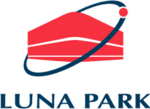
Santos Benigno Laciar, known familiarly as Santos Laciar and nicknamed Falucho, is an Argentine who was boxing's world flyweight and super flyweight champion.
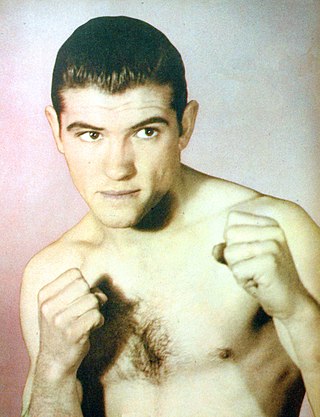
Pascual Nicolás Pérez was an Argentine flyweight boxer. Pérez was born in Tupungato in the Mendoza Province of Argentina, he went on to make history by becoming Argentina's first world boxing champion.

Nicolino Locche was an Argentine professional boxer who held the World Junior Welterweight title from 1968 to 1972. Born in Mendoza, Locche turned professional at the age of 19 and amassed a record of 117-4-14. He had several successful defenses including one over Antonio Cervantes. Regarded as one of the greatest defensive boxers of all time, his way of frustrating his foes with a minimum of head movement and avoiding most of their punches earned him the moniker 'El Intocable'.

The Estadio Tomás A. Ducó is a football stadium in Argentina, located in the Parque Patricios neighborhood of Buenos Aires. The stadium is the home ground of Club Atlético Huracán and has a capacity of 48,340 spectators.

The following is an alphabetical list of topics related to the Argentina.
Juan Carlos Lectoure, nicknamed "Tito", was an Argentine businessman, mainly involved in boxing events and former owner of Buenos Aires's Luna Park stadium.
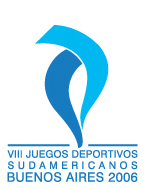
The VIII South American Games were a multi-sport event held from 9 to 19 November 2006 in Buenos Aires, Argentina, with some events taking place in Mar del Plata. An appraisal of the games and detailed medal lists were published elsewhere, emphasizing the results of the Argentinian teams.

The Estadio Mary Terán de Weiss, commonly known as Parque Roca due to its location within the limits of the Parque Polideportivo Roca, is a multi-purpose stadium in Buenos Aires, Argentina. The stadium, owned and operated by the Government of Buenos Aires, is located at Avenida Coronel Roca and Avenida Escalada in the Villa Soldati neighborhood.

Abel Ricardo Laudonio was an Argentine lightweight boxer. As an amateur he competed in the 1956 and 1960 Olympics and won a bronze medal in the lightweight division in 1960. In 1961, he turned professional and in 1965 challenged Nicolino Locche for the South American lightweight title, but lost by decision. Laudonio retired the same year with a record of 48 wins, 6 losses, and 2 draws. He later ran a fitness center in Buenos Aires.
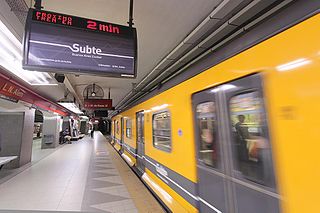
Leandro N. Alem is a terminal station of the Line B of the Buenos Aires Underground. The station's name honours Leandro N. Alem, a UCR politician from the late 19th century.
Carlos Pérez Suárez is a Mexican former professional boxer who competed from 2010 to 2013. He was promoted by Saúl Álvarez' company Canelo Promotions.

Justo Suárez, nicknamed "El Torito de Mataderos" ", was a popular Argentine light weight boxer. His huge popularity was widely greater than his professional achievements as a fighter.
The final stages of the 2014 Copa Sudamericana were played from October 1 to December 10, 2014. A total of 16 teams competed in the final stages.

Luis Federico Thompson was an Argentine professional boxer. Born in Colon, Panama, he later moved to Argentina where he was nationalized and afterwards became the Argentine and South American boxing champion.

The Quiero VolverTour was the second headlining concert tour by Argentine singer and songwriter Tini, in support of her second and third studio albums, Quiero Volver (2018) and Tini Tini Tini (2020), respectively. The tour was originally planned kick-off on 13 December 2018, at Estadio Luna Park, Buenos Aires, and ending on 18 September 2020, back in Buenos Aires at the Movistar Arena; however, due to the COVID-19 pandemic, it was interrupted six months earlier, ending on 9 March 2020, in Utrecht, Netherlands.
Evelyn Nazarena Bermúdez is an Argentine professional boxer who is a two-time IBF and WBO female light-flyweight World champion. She is the younger sister of former three-division world champion of boxing, Daniela Romina Bermúdez.
Gustavo Daniel Lemos is an Argentinian professional boxer.
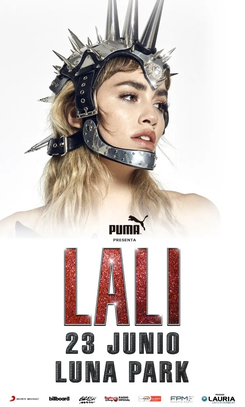
The Disciplina Tour was the fifth concert tour by Argentine singer Lali. The tour saw multiple songs performed for the first time live, including those from her fourth studio album, Libra (2020) and songs belonging to her fifth studio album, Lali (2023), such as "Disciplina", "Diva" and "N5". It began on 23 June 2022 and it travelled across Latin America, Europe and Asia, concluding on 8 April 2023.
Maira Moneo is an Uruguayan woman professional boxer. A lightweight, she has been recognized as the interim champion of the world in her division by the World Boxing Association since July 1, 2023, and by the World Boxing Council since December 15, 2023, and ranked by the International Boxing Federation at number 3. An aggressive fighter, her nickname is "La Panterita". A popular performer in Uruguay and in Uruguay's neighboring country of Argentina, Moneo has been featured various times at Argentina's international television boxing show, TyC Sports' Boxeo de Primera. Managed by Pedro Bologna and promoted by Georgina Rivero, Moneo was, as of 2024, the WBA's and WBC's interim women's world lightweight champion.
El Jorobado de París is an Argentinian musical based on the Victor Hugo novel Notre-Dame de Paris, created by Pepe Cibrián Campoy and Ángel Mahler. It premiered at Estadio Luna Park in 1993. A new version ran in 1995, also at Estadio Luna Park. It went on tour in Argentina in 1999, and was revived in 2006 at Opera Theater of Buenos Aires, at Teatro Cervantes in 2007, and in 2013, in commemoration of its 20th anniversary, at Teatro Presidente Alvear.
